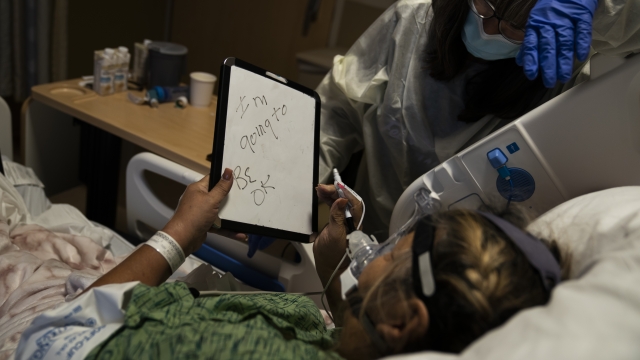IT'S ALMOST THE TWO-YEAR MARK OF THE PANDEMIC, and there are a lot of things the world is still trying to figure out — It's almost the two-year mark of the pandemic, and there are a lot of things the world is still trying to figure out, like the effects of long COVID.
Millions of adults in the U.S. are estimated to have long COVID symptoms that last months or years.
While we're working to understand how it impacts the body, we're learning more about how it impacts your wallet.
One study found that more than half of U.S. adults who got COVID or lost income during the pandemic struggle with medical debt.
This has forced some people to dig into their savings. But that's not all: medical debt has led to lower credit scores, and it can make it tougher for some folks to pay for basic necessities.
So, when people have long COVID, they often rack up fees from appointment after appointment that could put them behind on their medical bills.
That's because insurance companies won't always cover long COVID treatments.
Over the last year, the CDC has created medical codes for a lot of COVID symptoms, but many symptoms of long COVID still don't have one or they're complicated to categorize. When that's the case, an insurance company might decline to pay.
"I think they developed 159 new codes to try to deal with post-COVID stuff and that if you don't have a code, you can't submit a claim, and if you don't submit a claim, you don't get paid," said Linda Bergthold, former health policy researcher at Stanford University.
Insurance companies also want proof the treatments work, and without that, they might say it's not a "medical necessity” a concept Bergthold has studied for 30 years and conducted research on at Stanford.
"So the term medical necessity then became a way for an insurance company to say, 'Well, you may think it's medically necessary, Doctor X, but our research and our clinical policies show that this is not necessary for your patient,' and sometimes explain the reasons, and sometimes they just deny it," Bergthold said.
In December 2020, Congress approved more than $1 billion of funding for the National Institutes of Health to research long COVID.
Since then, the NIH has set up studies like their RECOVER initiative.
"There are clinics around the country that are treating patients and collecting data, but for those patients who are trying to get coverage right now or being denied, it's a tough war for them because the data isn't in and they have a hard time proving their case," Bergthold said.
A lot of these people are not only left with debt, but some are unable to work, putting their income and their work-sponsored health insurance at risk and adding more stress to their financial situation.
New data from the Brookings Institute shows that there may be a connection between the labor shortage and long COVID patients.
One study of patients with long COVID found that 23% were out of work due to their illness, and a separate study found that 28% were unable to work.
Brookings found that potentially over one million Americans are not working due to long COVID at any given time.
But this also doesn't account for people who have had to cut back their hours, start working part-time or take a demotion because of their sickness.
For someone who's already not feeling well and trying to balance their new lifestyle, that can make it even harder for them to take on these battles with insurance companies.
"I would say, you get a denial or your doctor gets a denial and tells you, 'This has been denied,'" Bergthold said.
"You fight that. You actually go back. You have your doctor help you go back to the insurance company and say, exactly what criteria did you use to deny this?"
This story was first reported by Christian Bryant at Newsy.



